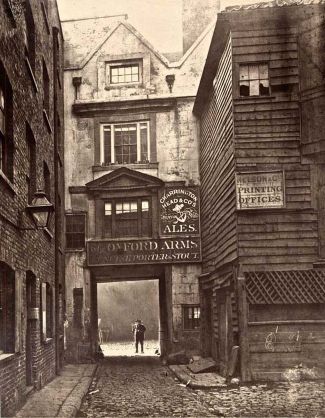Everybody Was…
If I were handing out trophies to character classes, the prize for Most Liked But Least Played would go the monk. As a player, I like monks. They look like a lot of fun. Since I started RPGing in the late 70s, I’ve seldom played a monk. (The most I’ve played a monk was in the Neverwinter Nights computer game.) The same situation applies to other games. For example, in super hero games, I dig the martial artist, but when I (rarely) get to play in a super hero game I’m most drawn to the brick archetype.

In earlier editions of D&D, monks tended to all be pretty much the same. The introduction of prestige classes brought with it some variety, to be sure, but we old-timers had to wait until the 3E DMG for those. Before that? Well, there was September 1981’s articles about the monk published in Dragon, and our AD&D campaign quickly switched over to the rewrite of the monk class presented in that issue. That really didn’t introduce variety. I suppose a gaming group could have used both the AD&D PH monk and the Dragon magazine monk, but the former’s clear inferiority would make that an odd choice.
Nowadays, in 5E D&D, the rules rewrite the prestige class concept into various subclasses, with each character choosing a subclass at 3rd level. For monks, this means a choice between various monastic traditions. In the 5E PH, we have the Ways of the Open Hand, Shadow, and Four Elements. Xanathar’s Guide expands choices with Ways for the Drunken Master, Kensei, and Sun Soul. (I’m sure there are others examples out there, but I don’t own those books.) Based on the idea that options are good, this is a good thing, but my grognard sensibilities still pop up once and a while.
Back in the day, all monks were human. Period. That was it, no other choices were officially available, et cetera. What’s more, every monk of X level had the same abilities as every other monk of X level. This wasn’t a bad thing. It wasn’t a bug; it was a feature derived from a specific vision of what a certain fantasy campaign world looked like. Newer editions of the game have gone different ways. Today, any race can be a monk, and (after 3rd level) monks vary quite a bit in terms of class features.
A while ago, I published The Dwarf. I wrote The Dwarf because part of me still loves the idea that a dwarf character’s class is Dwarf. Such a Dwarf was my very first character (although he soon morphed into an AD&D fighter/thief while our young selves gradually figured out that B/X D&D and AD&D weren’t quite the same game). To quote me: “Old School meets New School in The Dwarf, a new combination character class/race. Now you can relive the glory days of the World’s Greatest Roleplaying Game, back when a dwarf was a dwarf instead of a dwarf fighter or rogue or whatever. The Dwarf presents a complete race-as-class, including two new subraces, three new archetypes, and three new backgrounds.”
So, with all of this in mind, I thought, “What if some monk subclasses were race specific?”
In 5E D&D, anyone who wants to can play a dwarf monk, for example. When that dwarf monk reaches 3rd level, the player gets to choose whatever monk subclass seems most fun. The player can have a dwarf Drunken Master or a dwarf Shadow monk. Any other race can also follow any of the monastic traditions available. So, if we compare a dwarf Drunken Master and a human Drunken Master, the thing that distinguishes them is race. The class features are identical.
But ought dwarven monks not have a specifically dwarven monastic tradition? And if the dwarves do, wouldn’t the other races as well?
And so I’ve been working on monastic traditions that are race-specific. I’ve left out humans, half-elves, and half-orcs. They can remain content with the plethora of other options. Dwarves, elves, halflings, gnomes, and dragonborn, however, have their own unique monastic traditions that reflect a particular way of viewing the world and using ki. As of the typing of these words, I’ve completed rough drafts for every monastic tradition except the one for the gnomes. I’ll almost certainly have the playtest PDF available via DriveThruRPG by the end of this week.
When I’m done, seven (maybe eight) new monastic traditions become possible. So far, I’ve written the Ways of the Blade and Bow (high and wood elves), Brimstone (tieflings), the Cave (dwarves), the Dragon (dragonborn), the Hearth (halflings), and the Spider (drow). The gnomish Way of the Prank remains undone, and may turn into two monastic traditions: the Way of the Prank for forest gnomes and the Way of the Clank for rock gnomes.
To end this post, a sample of a few racial monastic tradition features for tieflings, dwarves, and drow, respectively.
Hellish Castigation: Starting when you choose this tradition at 3rd level, your furious indigation at being injured causes your ki to boil. If you spend 2 ki points, you have advantage when attacking with a monk weapon or unarmed strike any creature that has damaged you since the end of your last turn.
Deep Earth Way: At 6th level, you learn to speak, read, and write Terran. Also, you can expand your senses by spending 3 ki points. For 1 minute, you gain tremorsense with a range equal to your bonus unarmored movement. While your tremorsense is functioning, you also have advantage on Wisdom (Perception) checks that rely on hearing.
Greater Spider’s Transformations: At 11th level, your ability to channel your ki along eight-fold pathways improves. As an action, you can spend 4 ki points to transform and gain one of the following benefits:
- You can climb difficult surfaces, including upside down on ceilings, without needing to make an ability check. You ignore movement restrictions caused by webbing.
- Gain blindsight with a range of 20 ft.
- You gain a bite attack that is treated as a monk weapon. Your bite inflicts damage as a monk weapon plus 2d6 poison damage.
This ability has a duration of 1 hour. While this ability lasts, you can end one option as an action to gain the benefits of a different one.




